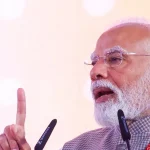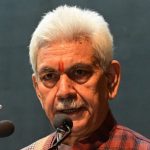The prevalence of Chronic Kidney Disease (CKD) is increasing and currently it is believed that 15-20 out of every 100 peoplehave some stage of CKD. It is ranked as the 12th leading cause of death worldwide and is projected to be the fifth leading cause of death by 2040.
CKD is an independent predictor of hospitalization, reduced quality of life and increased economic burden on patients, payers and healthcare infrastructure. Kidney disease is a silent killer and unlike heart disease and cancer the symptoms often come very late and often goes unnoticed until it is too late. Data from the registry of Indian Society of Nephrology has shown that majority of the patients are coming to the nephrologists in stage 4 and stage 5 CKD. The registry also shows that Diabetes and Hypertension are the leading causes of CKD.Both of these are lifestyle diseases and are essentially preventable.
Recent studies have shown that a persistent and ongoing CKD knowledge gap exists, one that is demonstrable at all levels of healthcare : amongst primary care physicians, nurses, dialysis technicians, the public as well as the policy makers.
This has been compounded by the unbridled proliferation of social media platforms like Facebook , YouTube, Instagram and Twitter. The commercial nature of these platforms often results in widespread proliferation of content that is not proven to be true by scientific methodology. The only measure of success in social media is the popularity of the post and the number of followers both of which can be manipulated by commercial tools like boosting. A lot of this information would not hold water if tested by standard scientific methodology.
The poorly informed public and patients find it challenging to access scientifically authentic and validated information. This is especially true for developing countries like India where there is a proliferation of quacks and untested therapies and regulatory mechanism are lax. A significant number of them often land up in the hands of these quacks loosing precious time as well as money.
The Northern part of our country is going through a cold wave. The cold weather is likely to continue for a while. Kidney patients are at risk of worsening of their kidney functions during cold weather for the following reasons :
Increased Blood pressure: It has been seen that the blood pressure tends to increase during winter months as the arteries tend to constrict or narrow. Also there is absence of sweating (which normally results in loss of water and salt form the body. Increased sugar levels.
Increased blood sugar levels:During winter months the blood sugar levels tend to increase partly due to lack of exercise/ more periods of inactivity and partly due to dietary changes resulting from increase consumption of winter snacks like halwa, gachak and revari.
Infections: Winter months are associated with higher rates of flu and pneumonias. Any infection tends to put pressure and causes worsening of kidney functions.
Weight Gain: In addition there is relative period of inactivity which predisposes to weight gain.All these factors result in increased blood pressure during the winter months.
How to protect your kidneys in winter?
In case you want to protect your kidneys and prevent worsening of kidney function I would suggest the following measures :
Good blood pressure control
Close monitoring of blood pressure should be done as winter sets in . In my experience most patients require an increased dosage of their BP Medicines. Blood pressure is one of the most important factors that affects kidney function and current guidelines recommend a blood pressure below 130/80 in patients with kidney disease. The targets are even lower for patients with protein leakage and thesepatients need to control their BP to below 125/80.
Good blood sugar control
Close monitoring of blood sugar should be done as winter sets in. The blood sugar needs to be checked in different times of the day before and after meals: morning afternoon and night. Most patients would require an increased dosage of their blood sugar medicines or insulin. The target Hba1c in patients with kidney disease is 7 but higher targets can be accepted in older patients.
Regular exercise
There have been concerns about outdoor exercise and walks precipitating heart attacks and the risk higher in CKD patients as a significant number of them have underlying CKD. However this should not deter them for continuing regular physical activity and /or exercise. I suggest that indoor yoga or gym should replace out door walks or cycling. This will help prevent weight gain and keep blood sugar and blood pressure in check
Diet control
An extra effort should be made to control salt in the diet. And high slat snacks like pakodaas should be minimised. For Diabetic patients sweet snacks like halwa, gachak and revari should be taken in moderation and blood sugar monitored periodically.
Monitoring of kidney functions
These should be checked more frequently and inertia to get these tests done should be avoided. Home pick up of blood samples is available form most laboratories so weather shoul not be an excuse to avoid blood tests. Similarly kidney patients should not miss their visit with their nephrologists.
For thoseliving in distant areas teleconsultations can be done as a screening measure to prioritizeand triage those patients who will require a hospital visit. We have published our experience with telemedicine in post COVIDperiod and found that it is an excellent tool for monitoring kidney patients and saves the cost of travel and loss of wages from travel visits to hospitals.
Stop Smoking
If you smoke, quitting now is the most important step you can take for your kidney health. The relative risk for developing CKD was 27 times higher and for end-stage renal disease, 51 times higher for person who have smoked but left. For those who continued smoking the risks were even higher: 34 times for CKD and 91 times higher for end stage renal disease . The negative impact of smoking also exponentially contributes to cardiovascular risk in patients with CKD, adding further insult to the injury.








